Cortinarius praestans (Cordier) Gillet - Goliath Webcap
Phylum: Basidiomycota - Class: Agaricomycetes - Order: Agaricales - Family: Cortinariaceae
Distribution - Taxonomic History - Etymology - Toxicity - Identification - Reference Sources
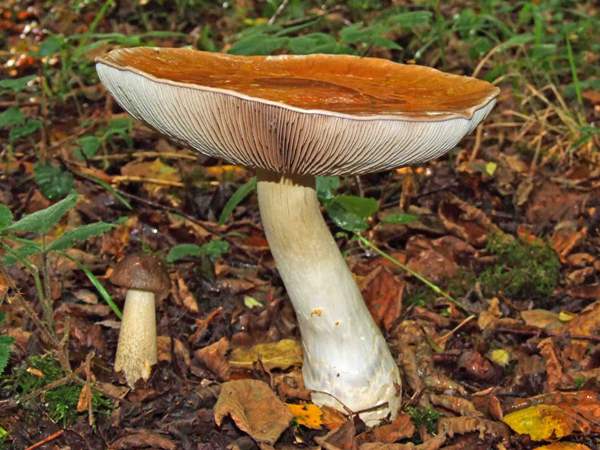
Cortinarius praestans usually appears in small groups or singly, in broadleaf and conifer woodland on alkaline soil. This beautiful mushroom is a rare find in Britain but more common in some parts of mainland Europe, where 'the brave' consider it to be a good edible mushroom. The difficulty of identifying Cortinarius fungi with complete certainty makes this a very risky menu item, and its rarity in most countries is further justification for leaving fruitbodies to drop spores rather than gathering them to eat.
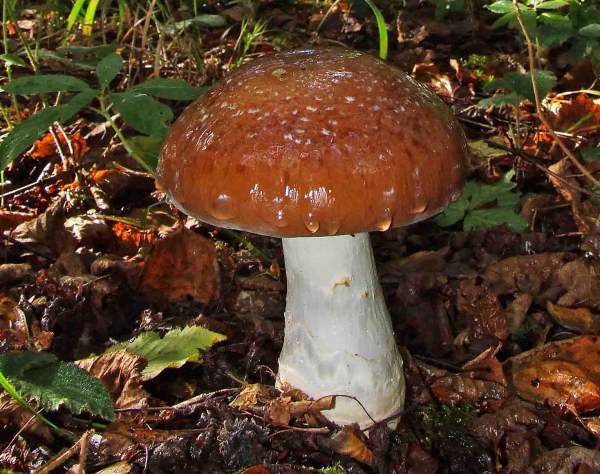
Distribution
In Britain this is one of the rarest of the large webcaps, and on mainland Europe its distribution is equally patchy but mainly concentrated in central and northern countries. The rage of Cortinarius praestans stretches across at least as far as Hungary in the east. Macroscopically similar mushrooms are reported from Canada, but it is far from certain that they are the same species.
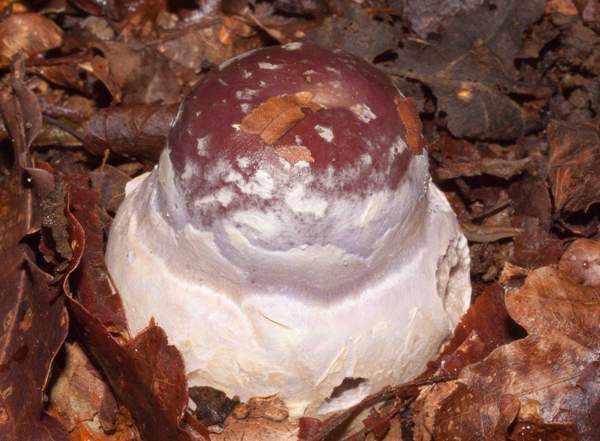
Taxonomic history
The Goliath Webcap was first described scientifically in 1870 by the French botanist/mycologist François Simon Cordier (1797 -1874), who named it Agaricus praestans. (Most gilled fungi were initially placed in a giant Agaricus genus, now redistributed across many other newer genera.) Another French mycologist, Claude-Casimir Gillet (1806 - 1896), transferred it to the genus Cortinarius in 1876.
Synonyms of Cortinarius praestans include Agaricus praestans Cordier, Cortinarius torvus var. berkelyi (Cooke) Boud., and Cortinarius berkeleyi Cooke.
Etymology
The generic name Cortinarius is a reference to the partial veil or cortina (meaning a curtain) that covers the gills when caps are immature. In the genus Cortinarius most species produce partial veils in the form of a fine web of radial fibres connecting the stem to the rim of the cap.
The specific epithet praestans comes from Latin and means excellent, outstanding or superior - accolades that are certainly fully justified in this instance!
Toxicity
Cortinarius praestans is highly regarded in many eastern European countries as a prized edible mushroom. Its rarity demands that we do not gather these fungi to eat - indeed in some European countries it is protected by law. But there is another very good reason for not doing so: Cortinarius fungi are notoriously variable in appearance during their fruitbody development, and so misidentification is all too common. Beware: several members of this genus - for example the Deadly Webcap Cortinarius rubellus - are deadly poisonous. I advise against eating any Cortinarius fungi.
Identification guide
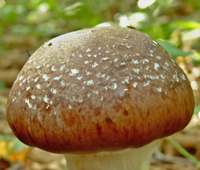 |
CapWith a sticky or slimy surface, caps of the Goliath Webcap are foxy brown sometimes with whitish patches and violaceous tints. The hemispherical or convex cap has a narrowly inrolled margin even when fully mature, and the cap surface is often radially wrinkled and the rim slightly or sometimes markedly wavy. Cap diameter ranges from 8 to 20cm when fully expanded. |
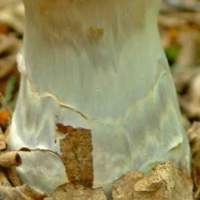 |
GillsThe adnate gills, which are covered by a cortina in young specimens, are white or pale grey at first, becoming clay brown as the spores mature. StemThe fibrilose stem, which is white with violaceous tints, is typically 2 to 5cm in diameter and 8 to 18 cm tall; the base is swollen and may be either clavate or bulbous. |
SporesEllipsoidal to lemon shaped, 13-17 x 8-10μm; covered densely with tiny warts. Spore printRusty reddish-brown. |
|
Odour/taste |
Not distinctive. |
Habitat & Ecological role |
Ectomycorrhizal, found under deciduous broadleaf trees and, less frequently, coniferous trees in chalk or limestone areas. |
Season |
August to November. |
Reference Sources
Fascinated by Fungi, 2nd Edition, Pat O'Reilly 2016, reprinted by Coch-y-bonddu Books in 2022.
Funga Nordica, Henning Knudsen and Jan Vesterholt, 2008.
Dictionary of the Fungi; Paul M. Kirk, Paul F. Cannon, David W. Minter and J. A. Stalpers; CABI, 2008
Taxonomic history and synonym information on these pages is drawn from many sources but in particular from the British Mycological Society's GB Checklist of Fungi.
Acknowledgements
This page includes pictures kindly contributed by Rob Petley-Jones.
Fascinated by Fungi. Back by popular demand, Pat O'Reilly's best-selling 450-page hardback book is available now. The latest second edition was republished with a sparkling new cover design in September 2022 by Coch-y-Bonddu Books. Full details and copies are available from the publisher's online bookshop...

